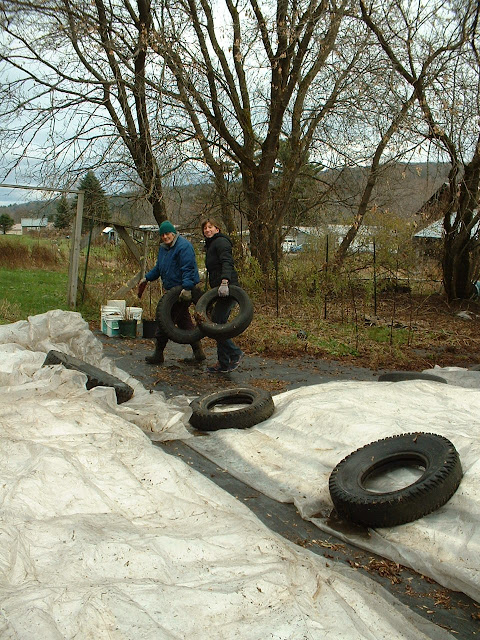I manage to write gardening columns for two newspapers, but darned if I can keep up with my blog. Mother's Day has come and gone and despite crummy weather, business was great. I have THE nicest customers. Here's a photo of some small pots I made for $5 each as a possible gift for Mom.
And this is a photo of yours truly that will be going in the daily newspaper this Saturday. Right now the weather sounds promising, which will bring out the gardeners.
My most recent gardening column was about calibrachoas... interesting to me, hopefully for some others as well. The photo shows normal sized geraniums with calibrachoas underneath and then the article.
And I will now cut and paste the newspaper column and call it a blog!
The Story Behind Calibrachoa (Million Bells)
Not long ago gardeners had not heard of calibrachoa or “million bells.” Described as “a tiny petunia on steroids, it is now one of floriculture’s most popular annuals, second only to geraniums.
The Japanese company Suntory was the first to experiment with hybridizing calibrachoa , which they found growing wild in South America. In the late 1990s Suntory licensed Proven Winners to market their new flower and calibrachoas were introduced to gardeners as “Millions Bells.”
There is no standard, widely accepted common name for the calibrachoa hybrids yet, but ”Million Bells” was its first commercial name and still seems to be used the most by folks looking for calibrachoa, even though it is a registered trademark name. (Think Kleenex and Bandaid, which are both registered trademarks.)
Calibrachoas can be grown in a garden, but are really best in containers where they spill over the sides. They work well in combination pots and window boxes as well as in hanging baskets. The flowers do not set seeds, so they need no deadheading.
There are now thousands of different calibrachoas in all kinds of colors and shapes with names like “Mini-famous,” “Cabaret” and “Superbells”. My favorites are from the Callie, Noa and double Mini-famous series.
The race to come up with new colors is highly competitive. The German grower Westhoff introduced a new variety with magenta and yellow blooms that they named “Candy Bouquet.” A year later the US growers, Proven Winners, introduced an identical calibrachoa, and named it “Holy Moly.” Westhoff launched a $45 million lawsuit which has not yet been settled, but gardeners can still buy either variety. (I grow “Candy Bouquet”).
Typically calibrachoa are grown from cuttings and it's illegal for growers like me to propagate them. Every tag has a “propagation prohibited” warning on it.
Recently a calibrachoa has been introduced that can be grown from seed. This new flower is called “Kabloom” and is offered in a few solid colors. In no time I’m sure the selection will be much wider. The advantage of seed-grown calibrachoa is that home gardeners can now grow their own calibrachoa, and not depend on those of us who buy in cuttings.
Calibrachoas need excellent drainage and full sun. They are actually a tender perennial, so can survive low temperatures. They are heavy feeders and if properly fertilized they will bloom nicely the entire gardening season.


















































